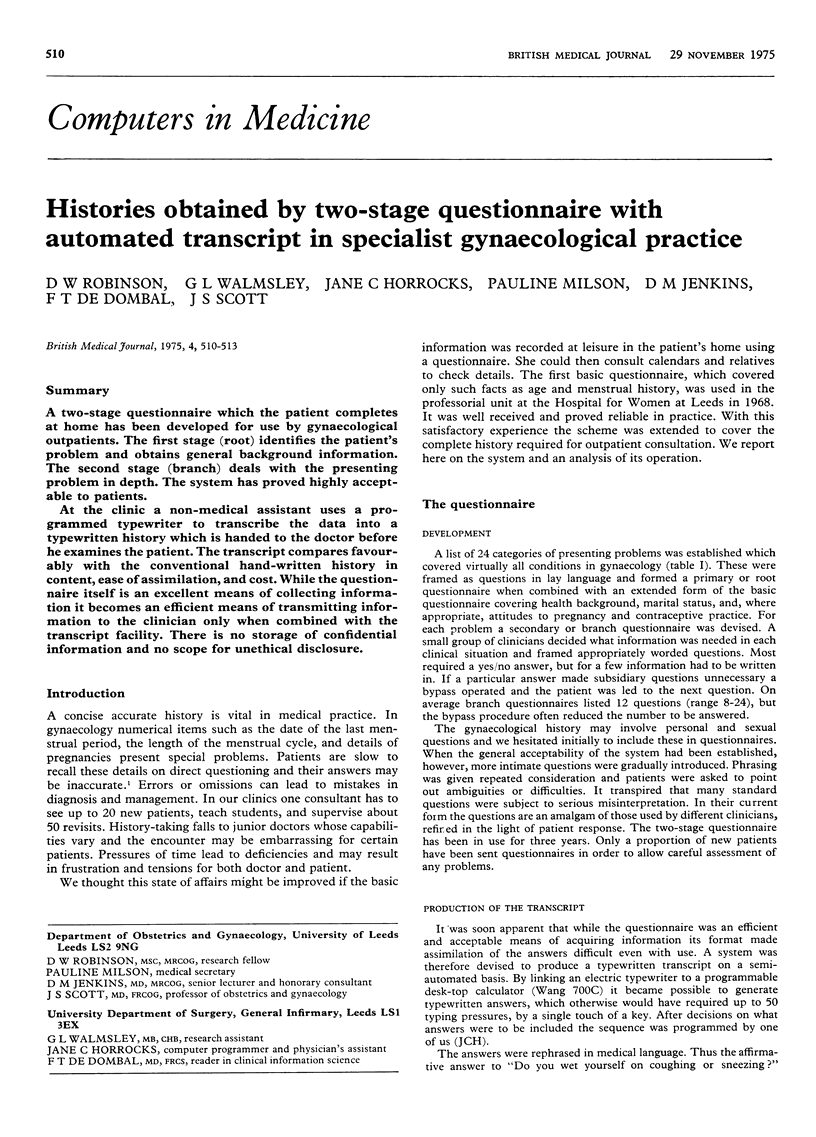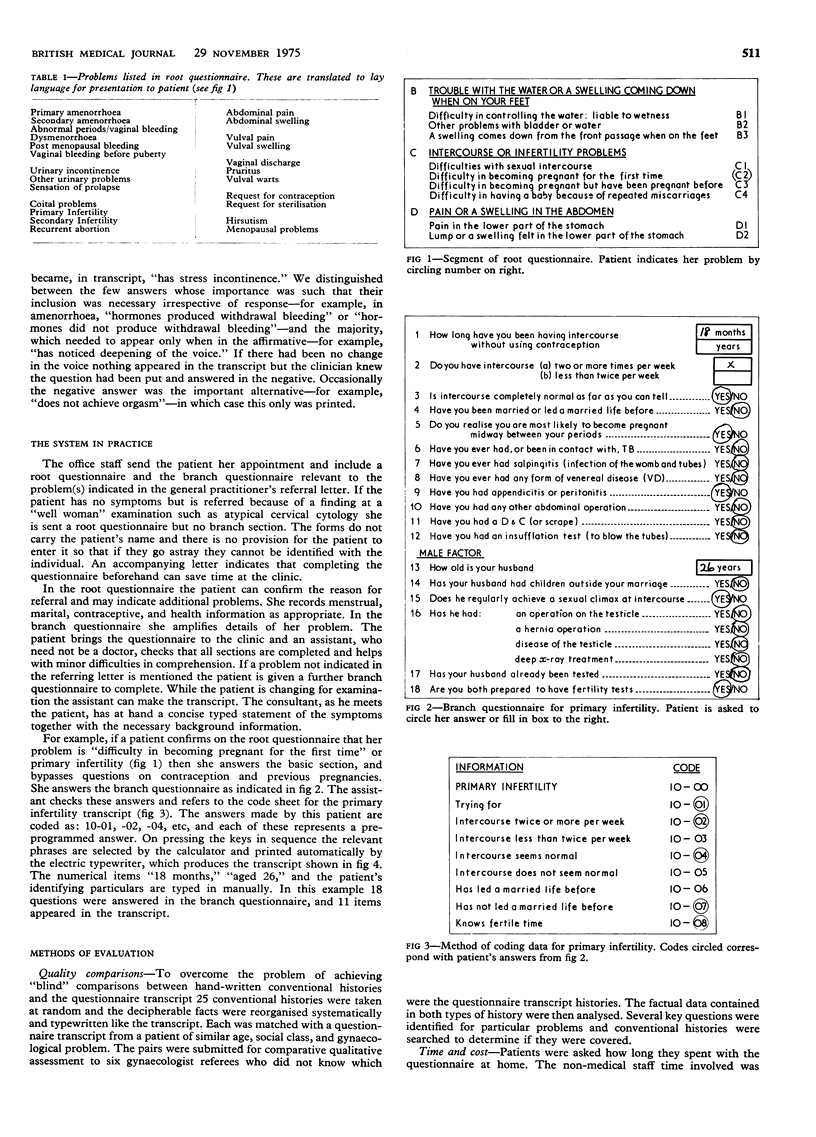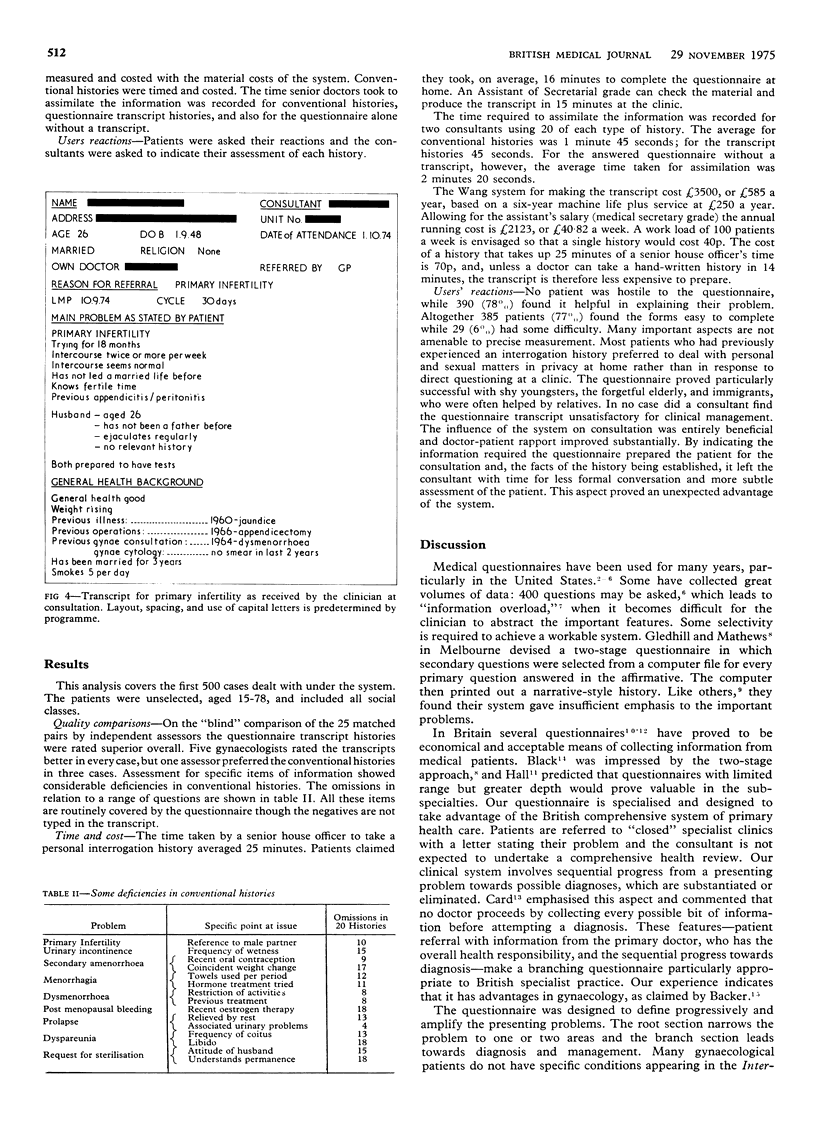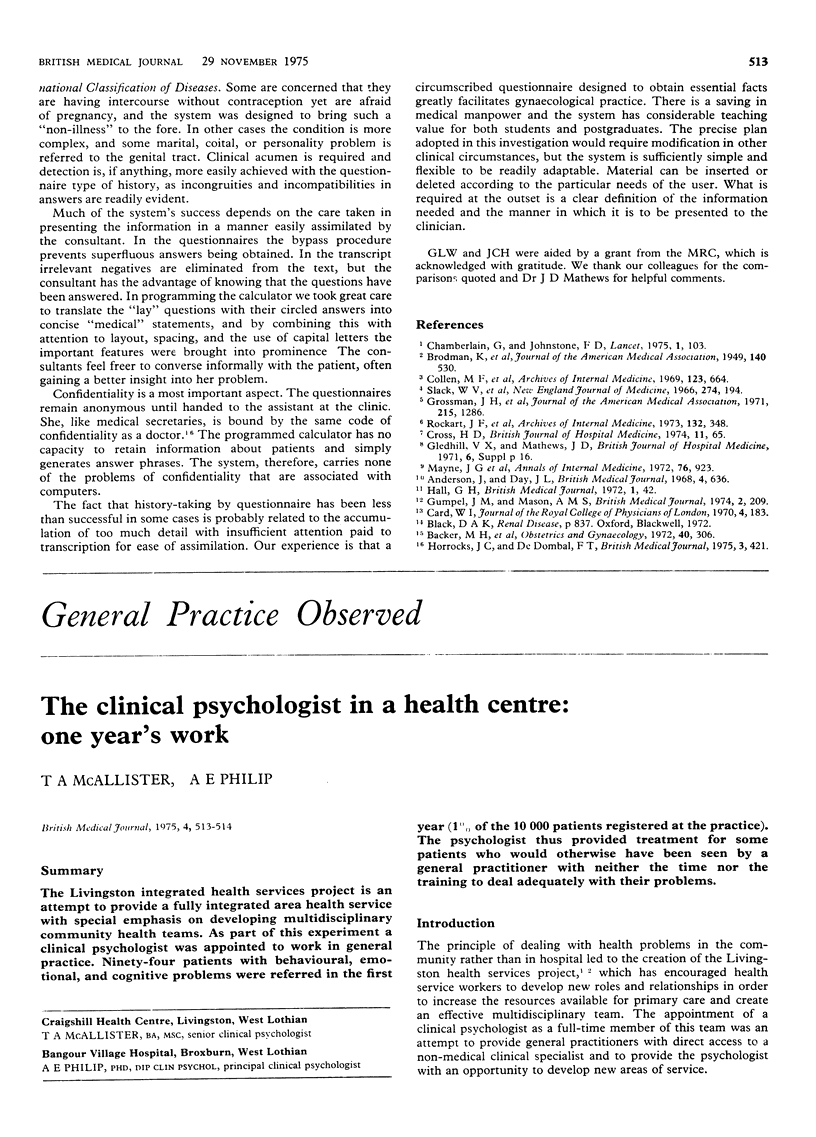Abstract
A two-stage questionnaire which the patient completes at home has been developed for use by gynaecological outpatients. The first stage (root) identifies the patient's problem and obtains general background information. The second stage (branch) deals with the presenting problem in depth. The system has proved highly acceptable to patients. At the clinic a non-medical assistant uses a programmed typewriter to transcribe the data into a typewritten history which is handed to the doctor before he examines the patient. The transcript compares favourably with the conventional hand-written history in content, ease of assimilation, and cost. While the questionnaire itself is an excellent means of collecting information it becomes an efficient means of transmitting information to the clinician only when combined with the transcript facility. There is no storage of confidential information and no scope for unethical disclosure.
Full text
PDF



Selected References
These references are in PubMed. This may not be the complete list of references from this article.
- Card W. I. The diagnostic process. J R Coll Physicians Lond. 1970 Apr;4(3):183–187. [PMC free article] [PubMed] [Google Scholar]
- Chamberlain G., Johnstone F. D. Letter: Reliability of the history. Lancet. 1975 Jan 11;1(7898):103–103. doi: 10.1016/s0140-6736(75)91109-5. [DOI] [PubMed] [Google Scholar]
- Collen M. F., Cutler J. L., Siegelaub A. B., Cella R. L. Reliability of a self-administered medical questionnaire. Arch Intern Med. 1969 Jun;123(6):664–681. [PubMed] [Google Scholar]
- Grossman J. H., Barnet G. O., McGuire M. T., Swedlow D. B. Evaluation of computer-acquired patient histories. JAMA. 1971 Feb 22;215(8):1286–1291. [PubMed] [Google Scholar]
- Gumpel J. M., Mason A. M. Self-administered clinical questionnaire for outpatients. Br Med J. 1974 Apr 27;2(5912):209–212. doi: 10.1136/bmj.2.5912.209. [DOI] [PMC free article] [PubMed] [Google Scholar]
- Horrocks J. C., De Dombal F. T. Diagnosis of dyspepsia from data collected by a physician's assistant. Br Med J. 1975 Aug 16;3(5980):421–423. doi: 10.1136/bmj.3.5980.421. [DOI] [PMC free article] [PubMed] [Google Scholar]
- Mayne J. G., Martin M. J., Taylor W. F., O'Brien P. C., Fleming P. J. A health questionnaire based on paper-and-pencil medium, individualized and produced by computer. 3. Usefulness and acceptability to physicians. Ann Intern Med. 1972 Jun;76(6):923–930. doi: 10.7326/0003-4819-76-6-923. [DOI] [PubMed] [Google Scholar]
- Rockart J. F., McLean E. R., Hershberg P. I., Bell G. O. An automated medical history system. Experience of the Lahey Clinic Foundation with computer-processed medical histories. Arch Intern Med. 1973 Sep;132(3):348–358. doi: 10.1001/archinte.132.3.348. [DOI] [PubMed] [Google Scholar]
- Slack W. V., Hicks G. P., Reed C. E., Van Cura L. J. A computer-based medical-history system. N Engl J Med. 1966 Jan 27;274(4):194–198. doi: 10.1056/NEJM196601272740406. [DOI] [PubMed] [Google Scholar]


